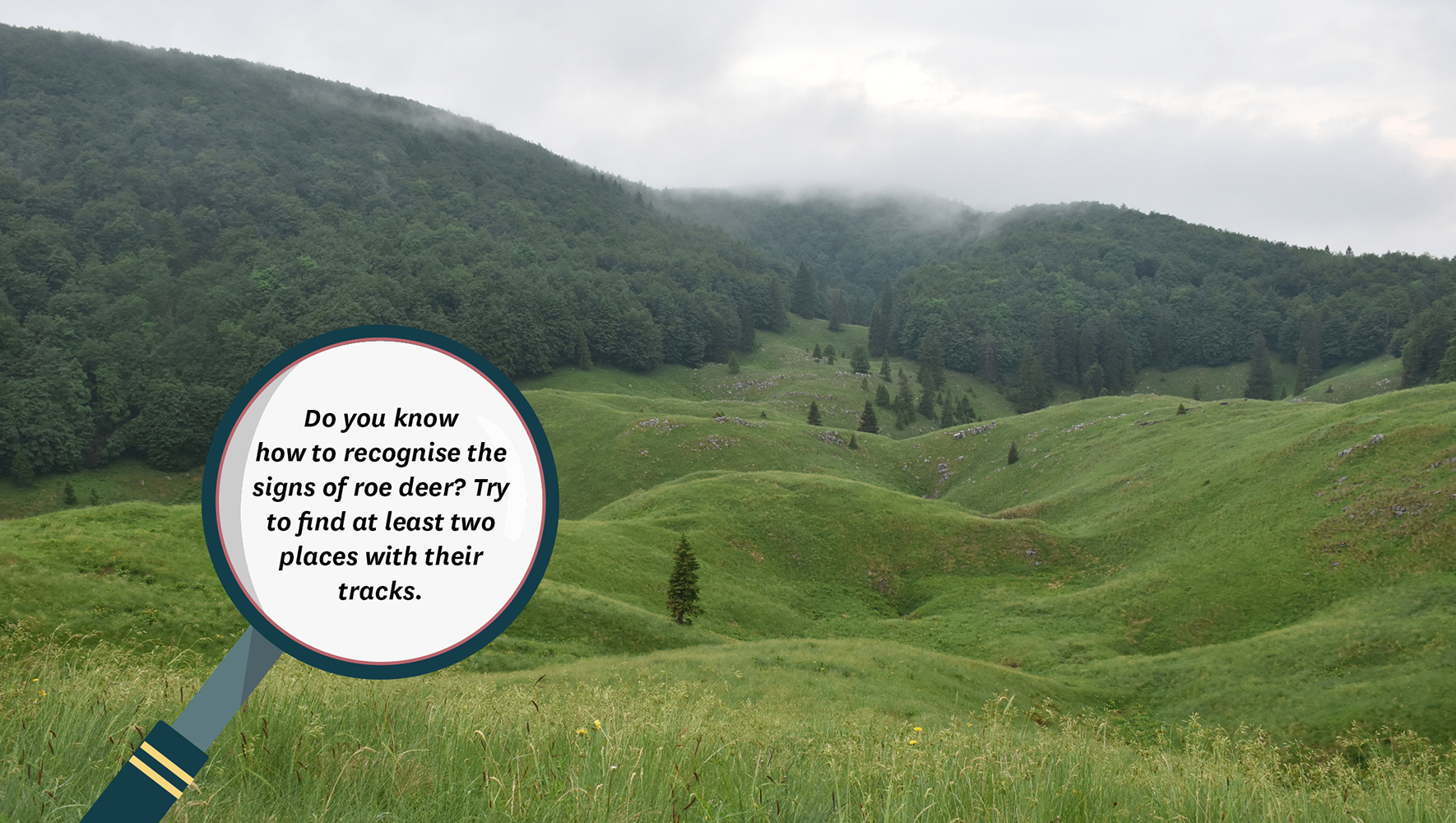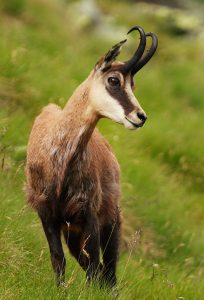To recognize the typical hunting area of the lynx, it is important to know its prey and understand its hunting strategy.
Lynx are specialized in hunting small ungulates, especially roe deer. They also hunt other ungulates (chamois, red deer, mouflon), wild boar, and small prey (rodents, hare, fox, birds) to a lesser degree.

An example of what a lynx hunting area looks like.
The Dinaric lynx population is somewhat specific in the relatively frequent use of fat dormouse, making up about 16% of their diet. It is particularly important for females and young lynx.
While hunting, an ambush is the main strategy, relying on their most developed senses – hearing and vision. They quietly move closer to their prey and jump on it. Their claws are hidden most of the time, allowing them to stalk quietly – this is also the reason claws are not visible in tracks. Lynx hunt on the ground and will only climb trees to escape danger.

Chamois, author: Miha Krofel
They will often stalk prey by setting an ambush in proximity to ungulate trails, because areas, where prey gather and stay still, are good places to perform the hunt, especially when this place gives the opportunity to ambush prey from above and hide while moving closer. Small patches of meadows surrounded by large dense forests where ungulates come to feed are perfect lynx hunting areas.
